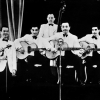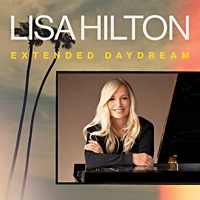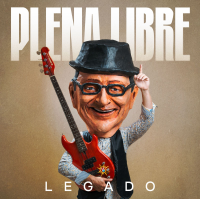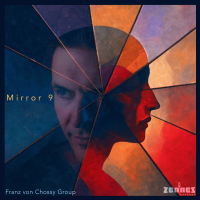Home » Jazz Musicians » Ray Bauduc
Ray Bauduc
Ray Bauduc's New Orleans origins instilled in him a love for two-beat drumming, which he retained even when he played with Bob Crosby's swing era big band. He was a was a hugely popular and influential jazz drummer best known for his work with the Bob Crosby Orchestra and their band-within-a-band, the Bobcats, between 1935 and 1942. Chick Webb always said Ray is a natural drummer and was reportedly Chick's favorite drummer to listen to. Bauduc was a tremendous influence on Art Blakey.
Before the popularity and prominence of his Crosby days, Bauduc had worked with Johnny Bayersdorffer, Eddie Lang, Joe Venuti and Freddie Rich, in whose band he was also featured as a dancer. In 1928, he joined the Ben Pollack band when Pollack decided to give up drumming and simply lead. When the Pollack band dissolved and became one of the few co-operative bands in jazz, under the nominal leadership of Bob Crosby, Bauduc was among its most important members.
Unlike the majority of bands of the era, which usually played in 4/4 time, the Crosby band was spurred on by Bauduc's lively 2/4 drumming. Extensively featured with the band (and in the spin-off small groups, the Bob Cats and Four of the Bob Cats), Bauduc's most memorable moment of glory came when an encore at the Blackhawk Ballroom found just him and bassist Bob Haggart improvising a tune during which Haggart whistled and Bauduc drummed on the strings of the bass. The result, Big Noise From Winnetka, was one of the band's biggest hits.
Another popular success, South Rampart Street Parade, was also a co-composition by Bauduc and Haggart (written on a tablecloth at the New Yorker Hotel). Bauduc's regular feature with the band, The Big Crash From China, provided an excellent example of his intelligent soloing and superb cymbal work. After leaving Crosby when the band broke up in 1942, Bauduc worked with Jimmy Dorsey, Jack Teagarden and others and in the '50s became co-leader, with former Crosby-colleague Nappy Lamare, of a popular west coast-based band.
Ray Bauduc was a trend setter in traditional jazz circles. His precise, disciplined, yet fiery patterns and syncopated fills helped New Orleans drummers make the transition into swing from the rigid, clipped progressions that had defined the previous era. The son of the great cornetist Jules Bauduc, his brother Jules Jr. taught Bauduc drums. His sister was also a musician, a pianist.
Tags
Charlie Harrington
drumsBilly Ponzio
drumsPhotos
Music
Recordings: As Leader | As Sideperson


























